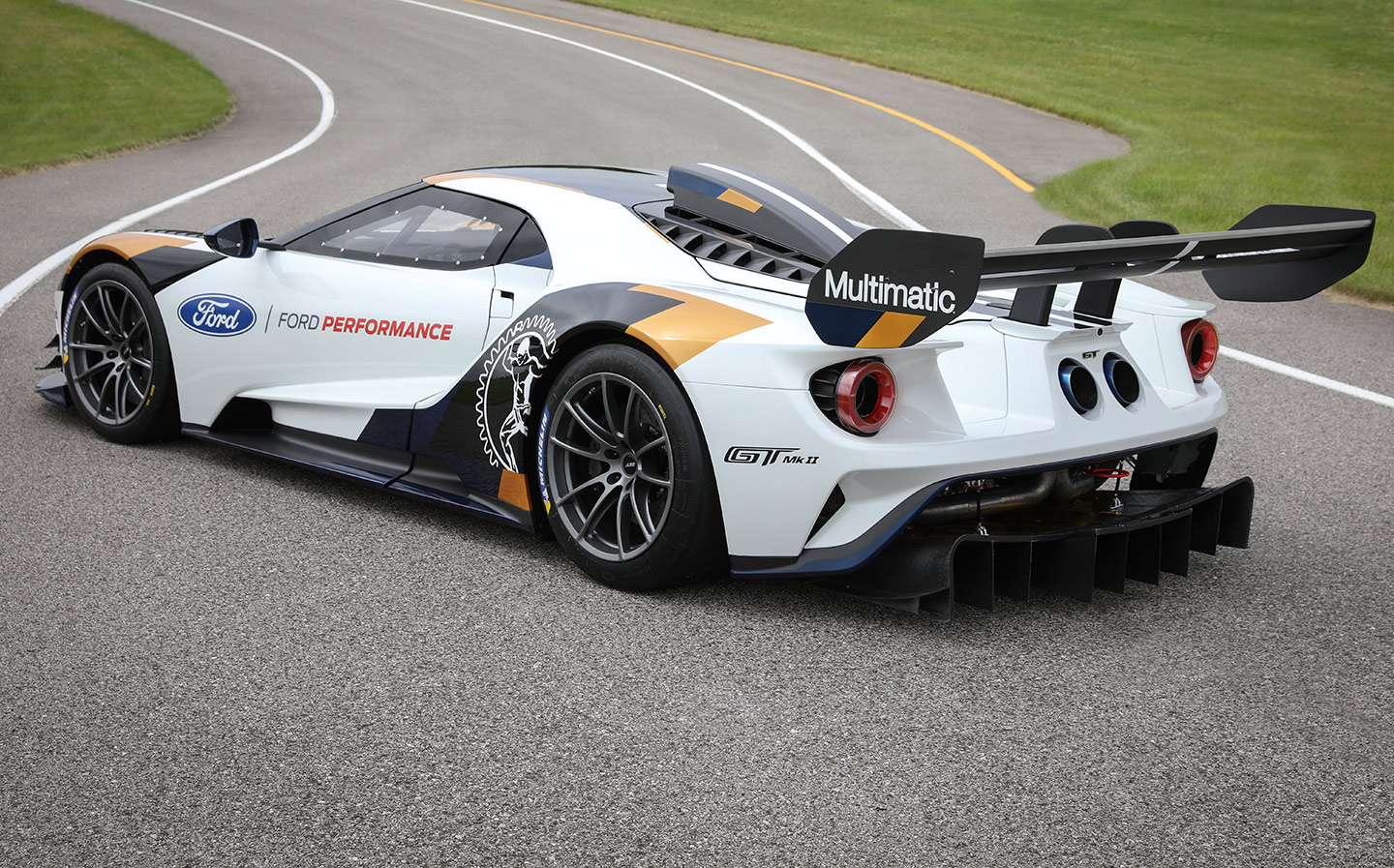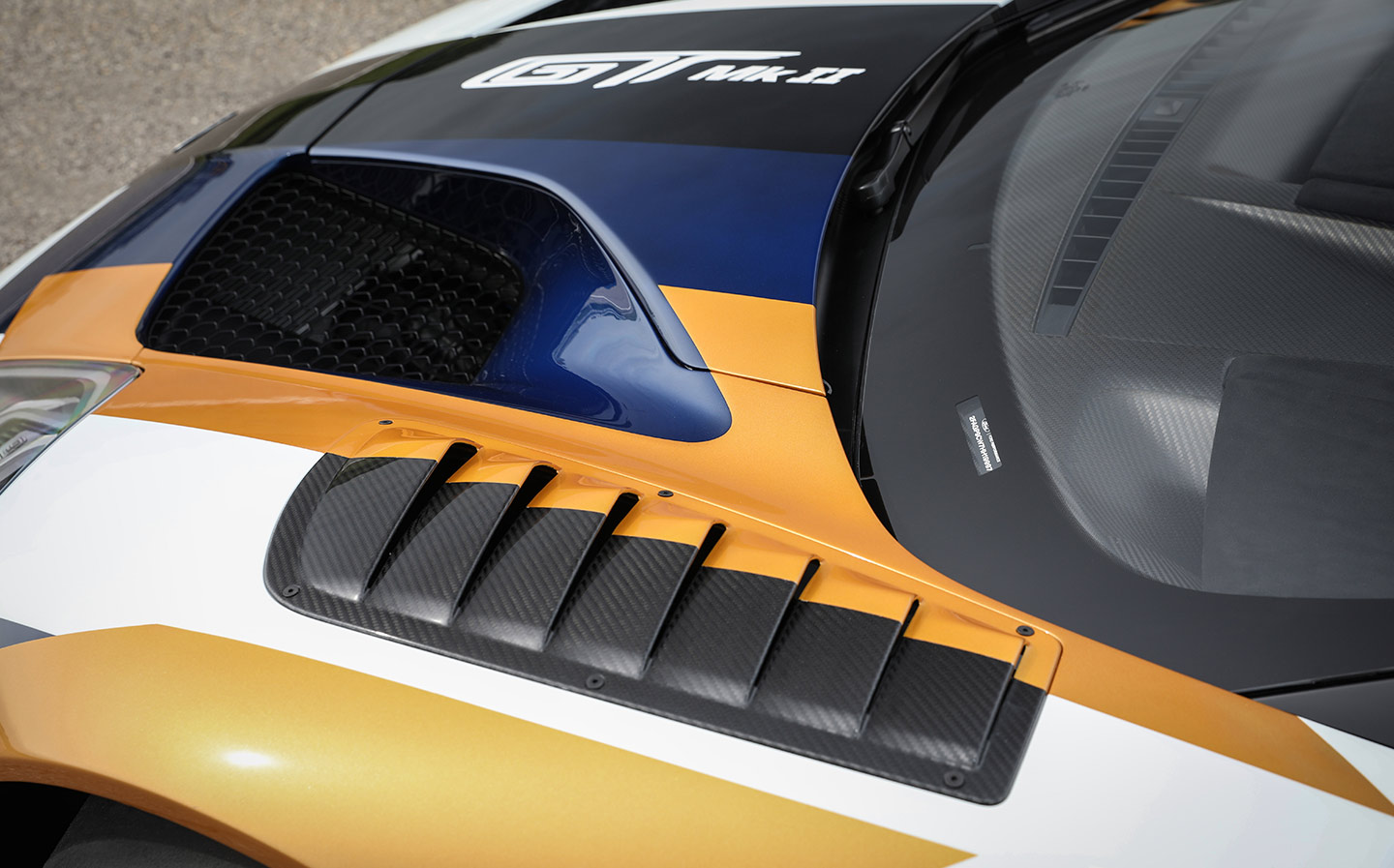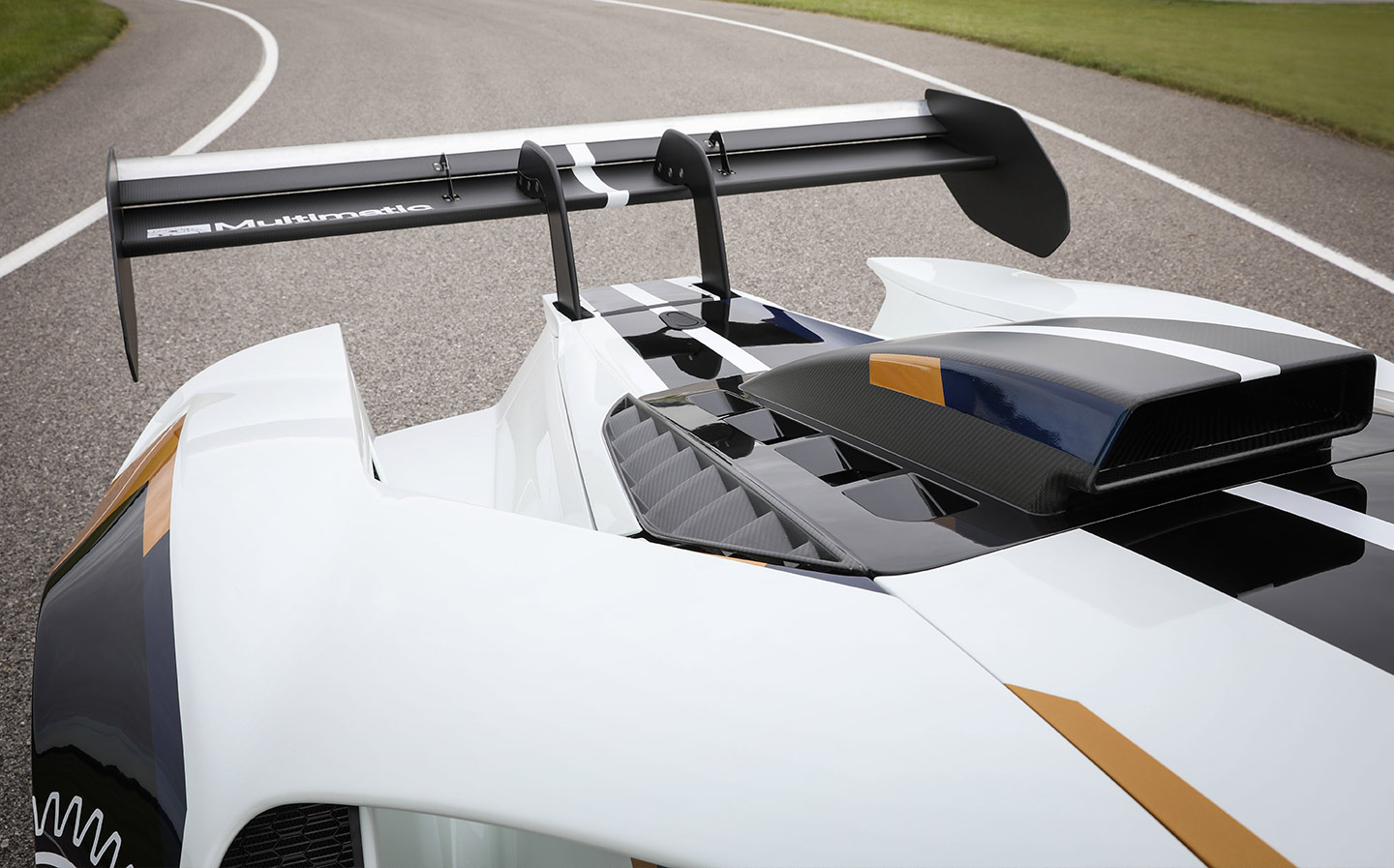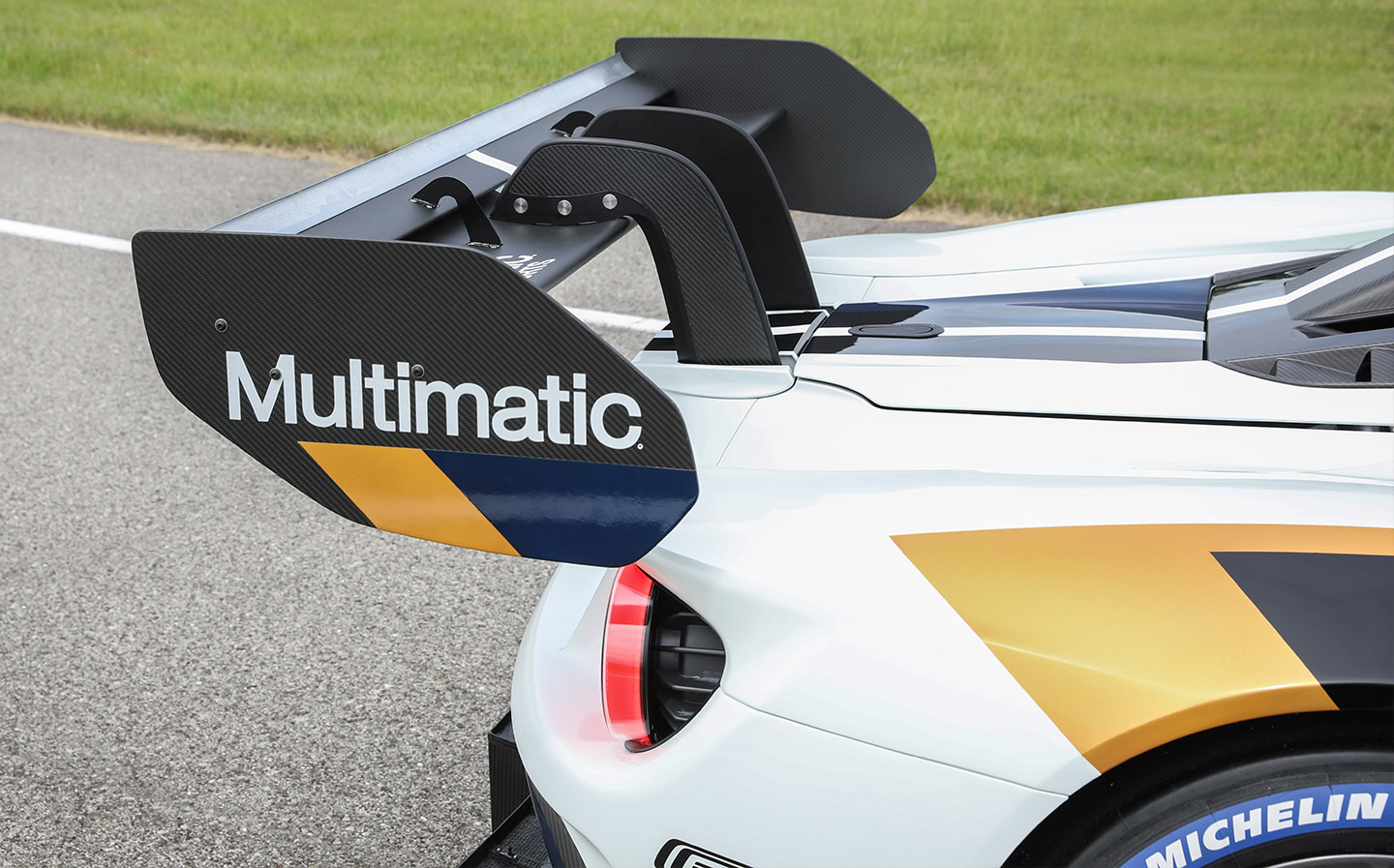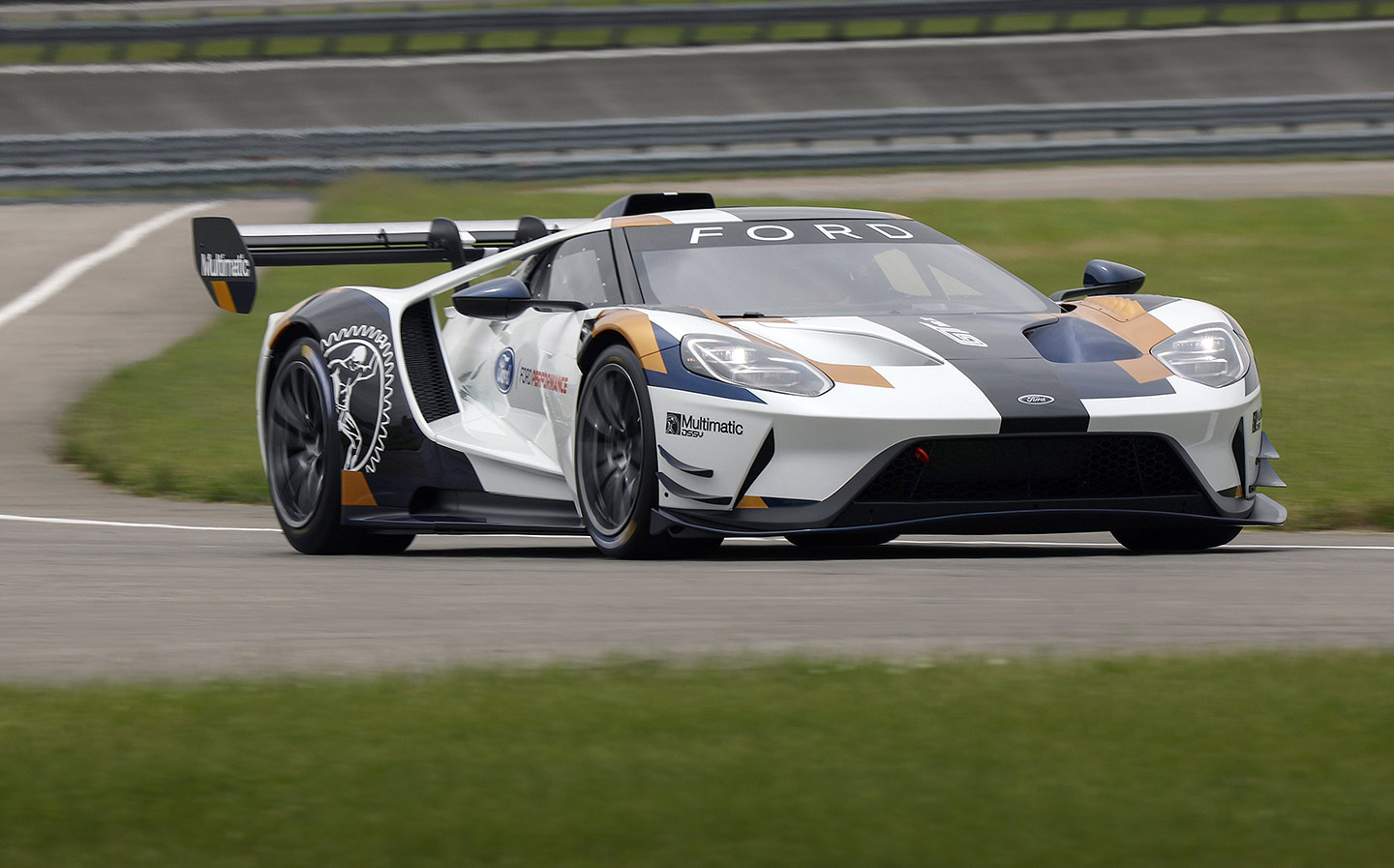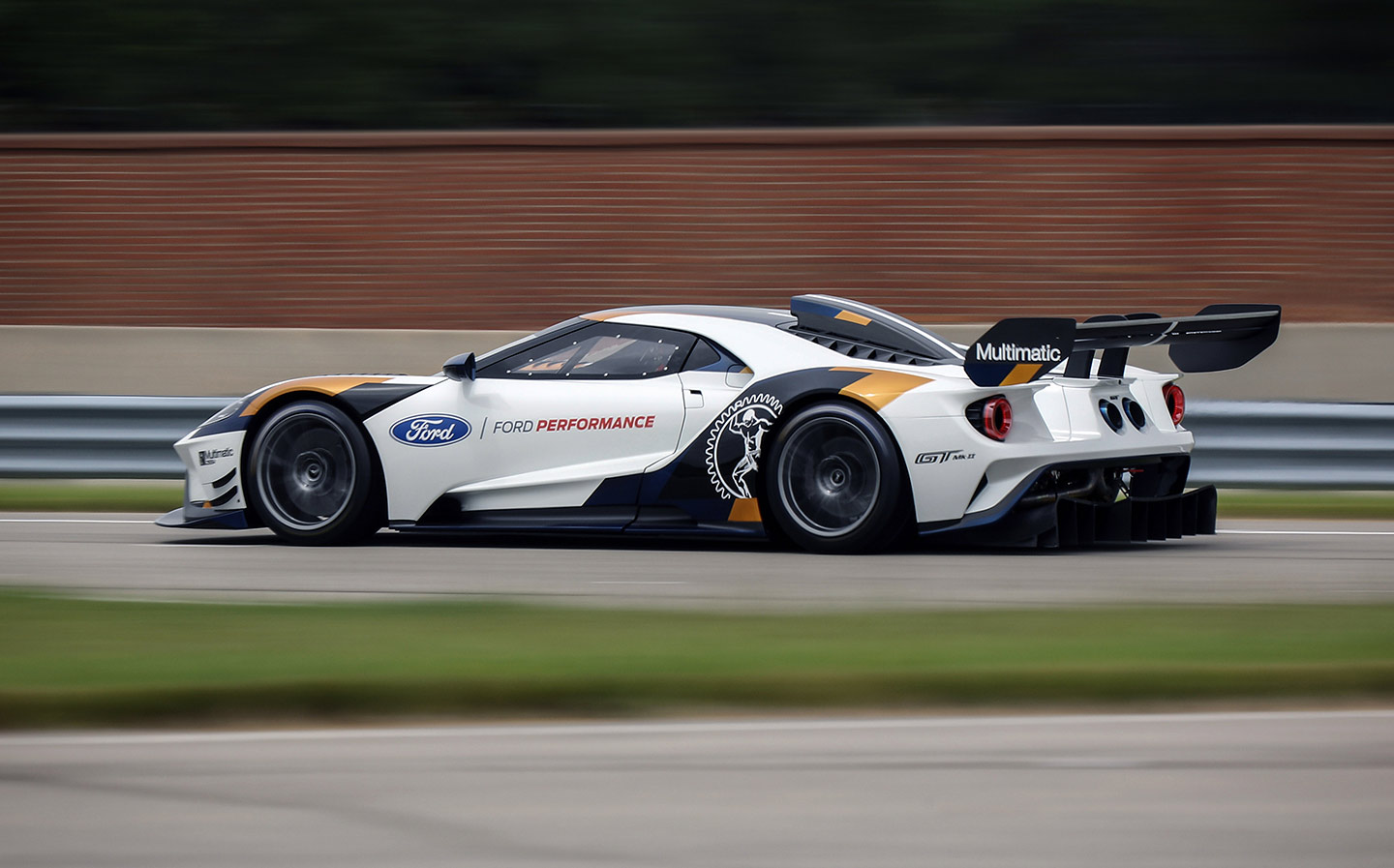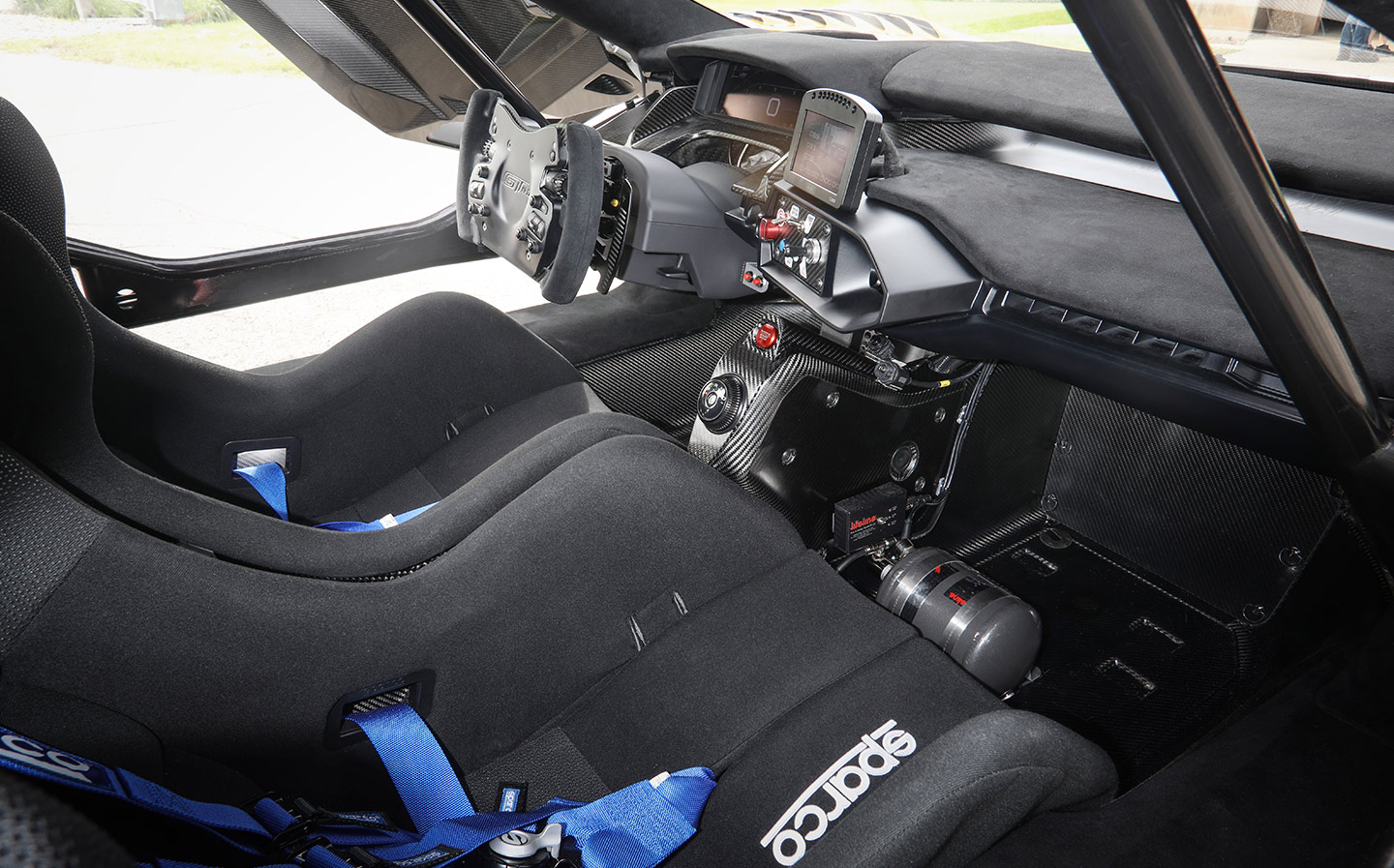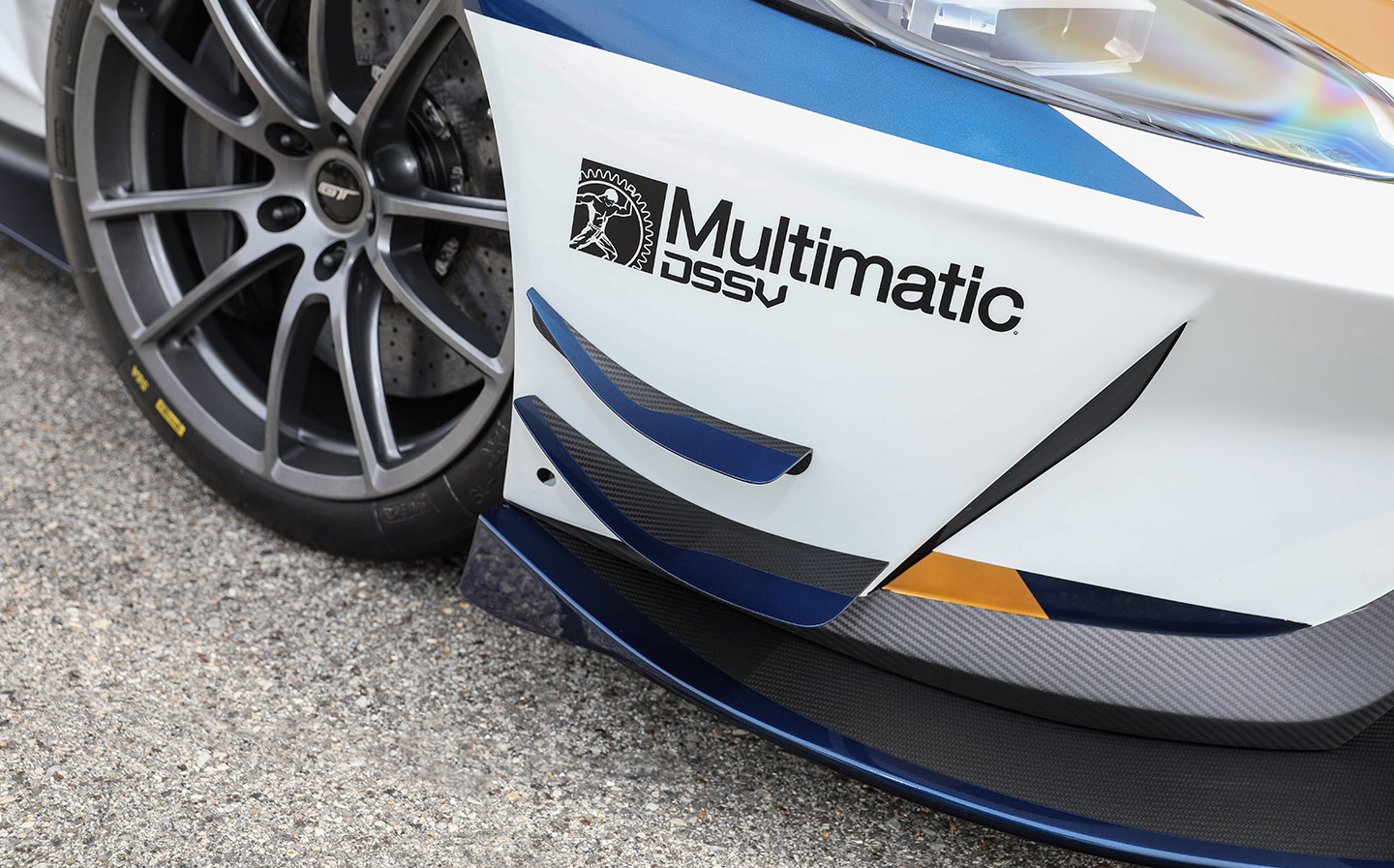Ultimate Ford GT supercar unleashed: meet the 691bhp 'Mk II' track special
The only limited thing about it is the production run
FORD HAS potentially stolen the show at the Goodwood Festival of Speed this year with the most extreme iteration of its GT supercar to date.
While the new model is officially called the “GT Mk II”, it isn’t a replacement for the current GT road car. Instead, this track-only special is billed as the version that unleashes the vehicle’s full performance potential, by making use of parts and features that can’t be used on the public road.
Perhaps the clearest showcase of this is the GT Mk II’s extensive aerodynamics updates. Helping the front tyres bite into the tarmac is a new front splitter and diffuser setup, which in conjunction with the side planes on the front bumper and the louvres in the wheel arches help balance out the colossal amount of downforce generated by the huge rear wing.
Race-derived suspension and slick Michelin racing tyres the car rides means the GT Mk II is able to pull lateral cornering forces of more than two times the force of gravity, according to Ford.
The GT has also been put on an extensive weight saving programme for the Mk II iteration. Replacing the road car’s adjustable suspension with the fixed-rate racing setup alone has shaved more than 150kg from the road car’s 1,385kg kerb weight, and even more mass has been lost through measures such as removing the passenger seat. If buyers want to take friends out for track-based passenger rides, though, they can specify to have the seat put back in as an optional extra.
With no road or racing regulations to adhere to, Ford’s been given free reign to extract even more power from the car’s 3.5-litre, turbocharged six-cylinder engine. As a result of unspecific modifications, the already potent powerplant now produces 691bhp — an increase of 53bhp over the production car, and 197bhp more than the Le Mans-winning racing version was allowed to muster.
The road car’s seven-speed dual-clutch transmission hasn’t required any strengthening or major hardware modifications in order to cope with the extra grunt sent to the rear wheels. Ford claims the only changes to the ‘box involve software calibration, to better suit the car’s track-only duties.
The Mk II GT’s brakes are identical to the ones you’ll find on the road-going model, according to the car maker. Being high-end carbon ceramic items, they already offer plenty of stopping power on the road car; Ford reckons the brakes on the Mk II are even better at bringing the car to a stop than the ones you’ll find on the racing version.
As well as making the Ford GT an even faster machine around a race track, the myriad parts fitted have also helped make the Mk II considerably more expensive than the road car: at $1.2m (roughly £955,000 at current exchange rates), it’s more than two times dearer.
However, as Ford will only ever build 45 examples of the GT Mk II, it’s highly likely buyers won’t encounter another one if they decide to let the car loose at a public track day.
Tweet to @J_S_Allen Follow @J_S_Allen



